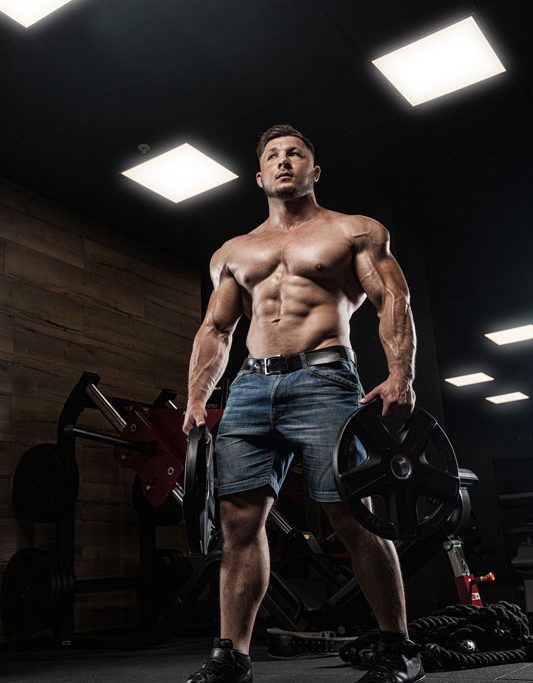Build upper chest size! Have you ever seen a guy with a huge upper chest that pops out of his shirt? You know, that Hercules sort of look! He may not be a huge bodybuilder. Yet underneath that shirt, the upper chest sticks out like a sore thumb. It looks sculpted and well defined.
Upper Chest Development
To build upper chest size is largely dependent on bone structure and the pectoral attachments to that structure. When doing bench presses and dumbbell presses use a medium grip at varying degrees of incline. Emphasize the 55 to 65 degree range. Focus on the target area by keeping your elbows back. Press straight overhead, plus a few notches to the rear. When doing barbell inclines, using a rigid bar is tough on the shoulder rotation for many body structures. Using individual dumbbells allows better range of motion and more accurate targeting.
Every chest exercise affects the entire chest. It’s not possible to completely isolate a muscle. However, a slight shift in angle will create a more pronounced effect on one specific area. That is, when using the correct overload parameters. In the case of the upper chest muscles, it’s important to perform movements in an incline position.
Build Upper Chest Size – Incline Bench Press
Execution of Exercise:
Lie on an inclined bench. Keep your feet firmly pressed down on the floor for stability. Use a medium width grip (shoulder width) on the bar. Lower the bar from arms length to the upper chest. Lower the bar under control. There should be a brief pause on your chest. Then return the bar to the starting (arms length) position.
StartFinish
Important Points:
Do not bounce the weight off your chest. The bar should move up and down in a straight line. The bar should not move towards your head or feet during the lift. If this happens it is a sign that the bar is not under control. It is common to push the bar out instead of up. Therefore a training partner may prove invaluable in finding the correct groove.
Build Upper Chest Size – Incline Dumbbell Press
Execution of Exercise:
Lie on an inclined bench, feet firmly on floor. Make sure that your butt, back, shoulders, and head are firmly positioned on the bench. Roll your shoulders back and down so the shoulder blades are firmly pressed against the bench. Your chest should be sticking up. This should result in the spine being slightly arched. Your arms should be placed straight up with your hands gripping a pair of dumbbells. Inhale and hold your breath as you lower the dumbbells. When they reach the chest, begin to move the weight upward. Exhale as you pass the point of greatest resistance. Pause slightly at the top of the movement and repeat.
StartFinish
Important Points:
Keep the deltoids (shoulders) from doing too much work. Don’t allow the rear deltoids to come off the bench, especially the last few inches when pushing the weight up. They should remain in the same position flat on the bench throughout the movement. If you are having trouble balancing the weight make sure that your arms remain relatively vertical throughout the left. The more vertical your arms are, the better your balance will be. The more narrow the grip, the more you involve your triceps. The wider the grip the more the outer area of the chest is worked.
Build Upper Chest Size – Incline Dumbbell Flyes
Execution of Exercise:
Hold two dumbbells at arms length with your palms facing each other (inward). Lower the dumbbells down and out in as wide an arc as is comfortable/feasible. Pay attention to getting as good a stretch as possible from your pecs. Lower the weights in this wide arc until your elbows are in line with your shoulder blades. From this position pull the weights back up in the wide arc making sure not to press the weight up.
Important Points:
Do not move up and down in a jerky or uncontrolled manner. This is a potentially dangerous exercise. Remember that you are using your pecs in this exercise. The weight is pulled/lowered in an arc and there is no pressing involved. This exercise can also be done on a flat bench.



